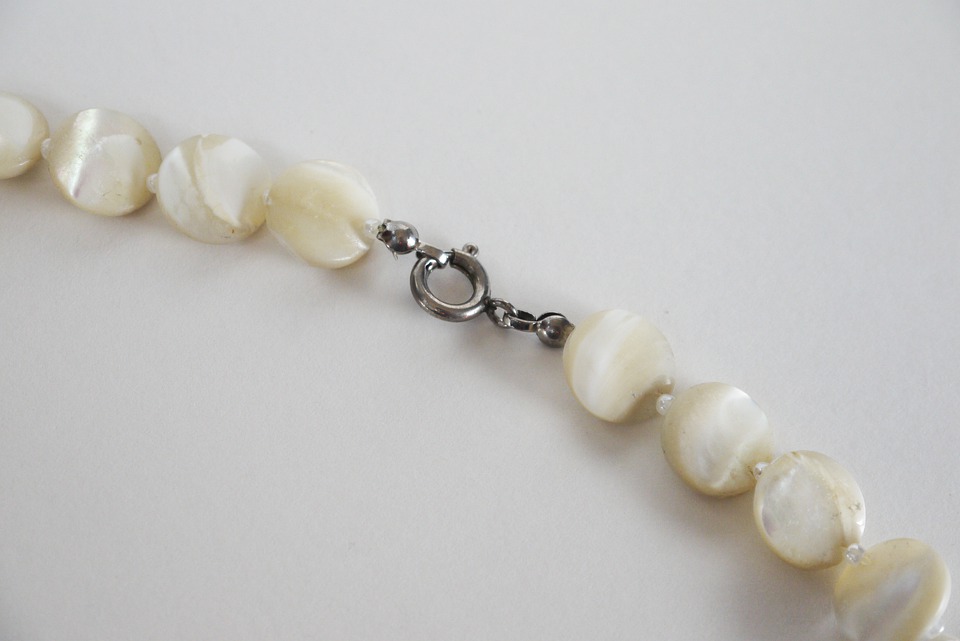What are the different types of bracelet clasps? Which bracelet clasps are best for you? There are a lot of clasps used in bracelets and necklaces, depending on the style and the value of the bracelet. Let’s take a deeper look into different styles of clasps and which styles of clasps are most likely to match your jewelry.
Spring Clasps and Lobster Clasps
Spring rings and lobster clasps are the most popular type of clasp for necklaces and bracelets. Spring ring clasps are round whereas lobster clasps tend to be shaped like, you guessed it, a lobster claw. Both of them “spring” open so that they can catch the other side of the bracelet. These clasps are very sturdy and very safe, but they can be an irritant because it takes both hands to put them on; you need to get someone else to help you put on a bracelet, whereas you can probably put on a necklace yourself.
Toggle Clasps
Toggle clasps are more frequently used in necklaces than bracelets because they require some extra length. But they’re still popular because they only require a single hand. A toggle fits in between a circular clasp and then the clasp holds fast as long as there isn’t a lot of slack in the bracelet.
Snake Clasps
A snake clasp is a serpentine S-shaped clasp. One side of the bracelet is attached to one side of the S shape while the other side of the bracelet is looped through the other side of the S. Snake clasps are most frequently used in silverwork jewelry produced by tribes, as they are elegant, attractive, and don’t require any specific technology to mill.
Magnetic Clasps
It used to be that magnetic clasps were only seen in less expensive jewelry because “magnets” weren’t considered elegant. Today, they’re seen in all types of jewelry because they’re just an excellent type of clasp. Strong magnets are affixed to each other, which means that the bracelet is held secure with barely any work on the bracelet wearer’s behalf. These clasps can also be designed themselves, so they are virtually seamless.
Pull Clasps
Pull clasps are knotted clasps that are usually used with bracelets made of leather cord or nylon. They are knotted so that they can be pulled to the left or right to tighten. While they don’t take much work to loosen, they will remain tight throughout the day. This is one of the easiest ways to ensure that a bracelet really fits.
Slider Clasps
A slider clasp is a very popular type of clasp these days. It’s similar to a pull clasp, but where a pull clasp has strings going left and right, the slider clasp has strings that pull downwards from a center bead. Like pull clasps, slider clasps are popular because you can put the bracelet on one-handed, with the additional advantage of being able to adjust the bracelet to exactly your size.
Watch Clasps
A watch-style clasp is exactly what it sounds like; the type of clasp you’d find on a watch. It swings to lock and locks tight around your wrist. These are favored for expensive jewelry because they lock tightly around your wrist and because they’re easy to use one-handed. The downside is that they really need a fairly wide bracelet to function correctly.
Open Box Clasps
These are rare but elegant clasps. If you’ve ever had a clasp that slid into a box and then locked, that’s what this type of clasp is. They are beneficial for expensive jewelry because they are very hard to disengage accidentally. But they also have a lot more parts than a simpler clasp, so it’s more likely that the clasp may break or weaken over time.
Changing Clasps
With corded or stringed jewelry, it’s always the option to change a clasp. If your clasp is attached by a ring, you can sometimes change even metal jewelry out. This can be necessary if you have weakened mobility or if you just hate struggling with your clasps one-handed. Changing clasps is something that a talented jeweler can do, especially if you have antique jewelry that you want to preserve, but that you need to modernize for the purposes of using it in the future.
Other Clasp Elements
In addition to looking at the style of clasp itself, you might want to know what it indicates about jewelry. The firmer the clasp is, the more likely you’re looking at fine jewelry. People don’t want to lose their fine jewelry, which is why many fine jewelry pieces err on the side of a spring clasp or a lobster clasp. Apart from that, the clasp is often where you’ll find something like a maker’s mark, or the mark of what type of gold or silver the jewelry is.
Knowing more about clasps doesn’t just help you find the right jewelry. It also helps you identify jewelry that’s higher in quality compared to jewelry that might just be costume or fashion jewelry. The better the quality of clasp, the higher quality the goods that the clasp is protecting.
Which Clasps Are Better?
Regardless of the clasps that you use, there’s no one “better” clasp—there are better quality clasps. It’s absolutely critical that you get your bracelets and treasured jewelry pieces from a jeweler who produces materials that are made to last. You can start looking at Occasions Fine Jewelry today for your next investment in something spectacular.

